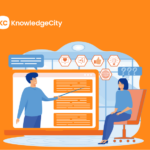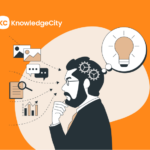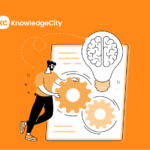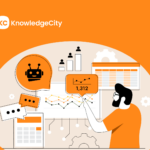If you’ve ever tried to strengthen cross-functional capability, improve internal mobility, or increase employee stickiness, without burning budget on external hires, you know how difficult that balance can be. It’s a familiar challenge for many organizations.
Job rotation isn’t a new concept. But when done well, it can address all three of these goals at once. The key lies in how thoughtfully it’s designed and how effectively it’s scaled.
In this blog, we’ll explore how job rotation works, when it delivers the most value, and what it takes to implement it successfully.
What Is Job Rotation?
To understand its impact, let’s begin with what job rotation means.
Job rotation is a structured plan to move employees across roles, departments, or functions within a set time period. It helps them develop broader skills, understand how workflows connect, and uncover strengths that may stay hidden in a fixed role.
Unlike informal transfers, job rotation is tied to a learning goal. For example, a marketing analyst might spend time in product and operations to better understand delivery and feedback loops. These cross-functional experiences help sharpen thinking, improve decisions, and build a well-rounded perspective.
Why Job Rotation Matters
So why does this approach hold value in today’s workplace? Most workplaces today can’t depend on narrow specialization. They need people who are ready to step across functions and stay flexible as things shift.
For HR and L&D professionals, job rotation offers a practical way to meet this demand by:
It also signals something important: that learning is part of the job. Employees who rotate aren’t being moved around randomly. They’re being prepared to grow.
How Job Rotation Supports Development and Retention
Let’s look at how rotation contributes to both individual growth and long-term retention.
1. Builds Broader Capabilities
As we discussed earlier, rotating through functions lets people learn skills that complement their primary roles. A finance employee might grow stronger in communication after spending time in customer service. These experiences stretch ability without pulling someone away from meaningful work.
2. Sharpens Engagement Through Change
New challenges often bring new energy. A shift in team or focus can reset attention and encourage fresh contributions. It keeps people mentally invested in their work.
3. Supports Long-Term Retention
People often leave not because they’re unhappy, but because they don’t see the next step. A rotation program gives them new opportunities within the same organization, before they start looking elsewhere.
This becomes especially valuable when you’re trying to build a strong internal talent pipeline.
Common Types of Job Rotation
Job rotation can take many forms depending on your goals and structure. Here are a few common types:
1. Lateral Rotation
Moves people into different roles at the same level, usually across departments. This improves cross-functional knowledge.
2. Vertical Rotation
Involves changes in responsibility level, often used to prepare future leaders.
3. Project-Based Rotation
Short-term shifts based on the needs of a specific project. These often include diverse, cross-team experiences.
4. Location-Based Rotation
Used in global or regional organizations to expose employees to different markets or customer segments.
Real-World Examples
These strategies are already in place at many organizations. Here are a few ways they are being implemented:
- Graduate Development Programs: Many organizations rotate fresh graduates through several departments over a couple of years to help them find the right path.
- Operations Cross-Training: In manufacturing, employees may rotate between assembly, logistics, and quality control to improve continuity and strengthen teamwork.
- Communications Teams: Rotating across PR, internal communications, digital strategy, and crisis management gives professionals a well-rounded skill set.
These examples show how rotation can be tailored to different industries and roles.
When Job Rotation Works Best
Identifying the right timing can make a major difference in impact.
Job Rotation vs. Other Development Approaches
Let’s compare job rotation with two other common ways to expand employee growth.
Each approach plays a part in growth, but rotation is especially useful for preparing teams to adapt and lead.
Best Practices for Running a Job Rotation Program
If you’re planning to start or improve a rotation program, here’s what helps it succeed:
- Start with a Goal: Each rotation should serve a purpose. It might meet a business need or support someone’s development. Avoid rotating just for the sake of change.
- Communicate the Why: Help employees understand the intent behind their move, whether it’s career exploration, leadership readiness, or project alignment.
- Train Before Transitions: Give people enough context and tools before entering new roles. Preparation lowers stress and speeds up contribution.
- Keep Roles Meaningful: Rotated positions should offer more than busywork. Make sure they come with real learning and responsibility.
- Monitor and Adjust: Check how things are going throughout the rotation. If something seems off, such as timing, workload, or role fit, be open to making changes.
These steps make the experience more structured and productive for everyone involved.
How HR and L&D Teams Drive Rotation Success
Rotation only works when it’s well supported. This is where HR and L&D teams play a leading role.
1. Creating Meaningful Rotation Paths
HR plays a key role in identifying the right roles and departments for rotation. This means looking at business needs, growth opportunities, and employee development goals, then mapping paths that serve all three. When rotation is designed with intention, it aligns seamlessly with workforce planning.
2. Preparing Employees for Transitions
L&D ensures employees are ready to step into new roles with confidence. That involves targeted onboarding, role-specific training, and structured coaching. Ongoing support, like regular check-ins and peer learning, helps people adjust faster and perform better.
3. Making the Program Visible and Accessible
Too often, rotation is limited to high-potential employees or hidden from broader teams. HR and L&D can broaden access by creating clear criteria, sharing success stories, and promoting the program as a growth opportunity, not a reward.
4. Tracking and Sharing Outcomes
From participation rates to post-rotation readiness, HR teams gather and interpret the data that shows whether rotation is working. And when that data is tied to engagement, retention, and internal mobility, it becomes a powerful story to share with leadership.
With the right coordination, job rotation can become an established part of how employees grow within your organization.
Measuring the Impact of Job Rotation
Tracking these metrics can help you refine your approach and demonstrate value to leadership in a tangible way.
How Rotation Supports Succession Planning and Workforce Agility
Rotation strengthens your ability to plan ahead. It gives future leaders a stronger foundation and allows teams to handle change with more ease.
When employees understand how different departments operate, they can step into new roles more confidently. And when someone exits unexpectedly, others are better prepared to fill the gap, not just from a knowledge standpoint, but with firsthand experience.
This kind of flexibility builds real resilience, and it starts with exposure.
Designing Fair and Inclusive Rotation Programs
To make rotation work for everyone, fairness must be built in from the start.
When equity is intentional, more people benefit, and so does the business.
Can Job Rotation Work Remotely?
Absolutely. But it requires more structure and visibility. Here are a few ways to make remote rotation effective:
The principles stay the same; it’s the execution that shifts.
Pitfalls to Avoid
Even with the best intentions, rotation can fall short if you overlook these risks:
Staying aware of these helps you keep the program useful and respected.
Gathering Feedback Through Pulse Surveys
One of the most overlooked, but essential, steps in avoiding these pitfalls is capturing feedback during the rotation process itself. Short pulse surveys can surface meaningful insights while the experience is still fresh.
Try asking:
These questions help you listen actively and act with purpose.
Conclusion
Job rotation creates real opportunities for employees to grow by gaining new skills and perspectives. It strengthens teams, increases engagement, and prepares your workforce to meet tomorrow’s challenges with confidence. Achieving this requires more than moving people around. It takes clear goals, thoughtful design, and ongoing support.
KnowledgeCity helps organizations make job rotation programs successful by providing relevant training, learning paths, and tools to track progress. As the best employee training platform in the USA, we empower HR and L&D leaders to build development programs that drive lasting impact. When learning is integrated with rotation, employees move forward with purpose, and your organization moves ahead with strength.
Subscribe to Our Newsletter
Join 80,000+ Fellow HR Professionals. Get expert recruiting and training tips straight
to your inbox, and become a better HR manager.
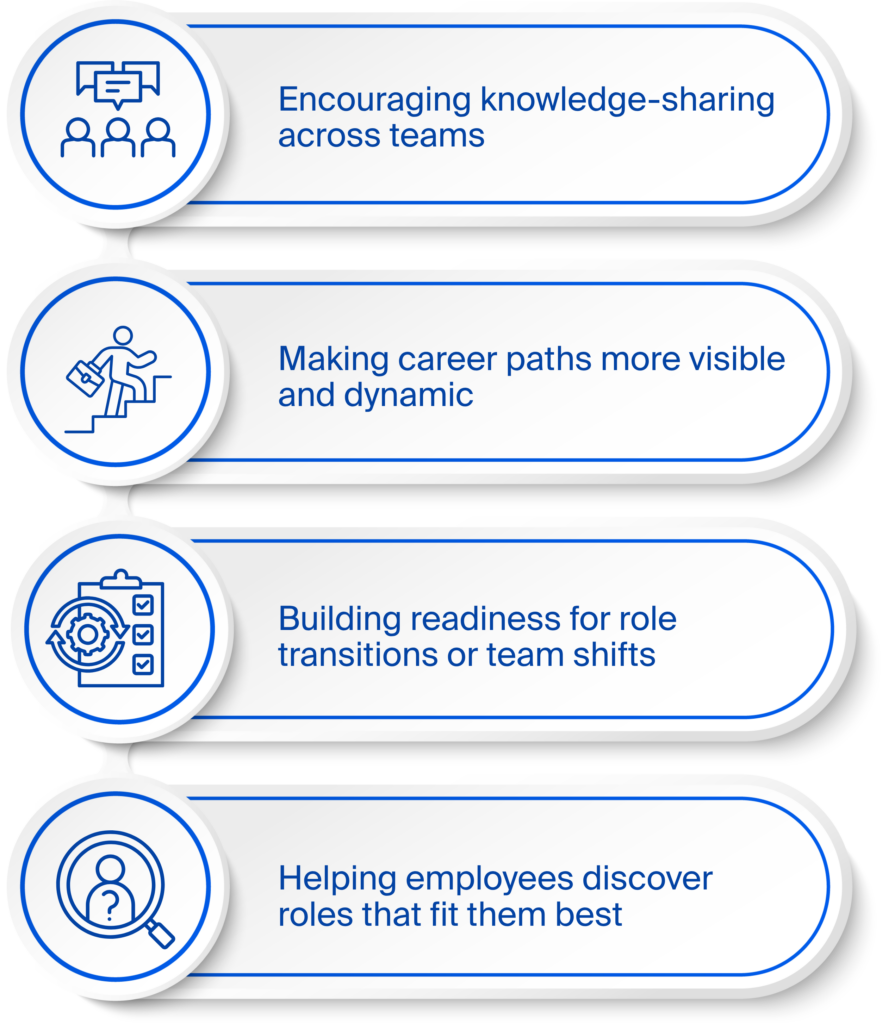
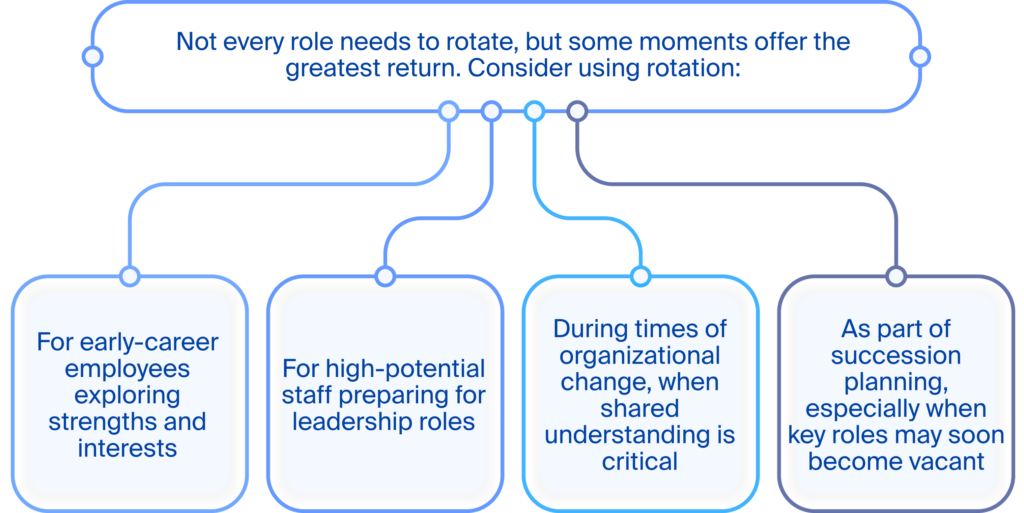
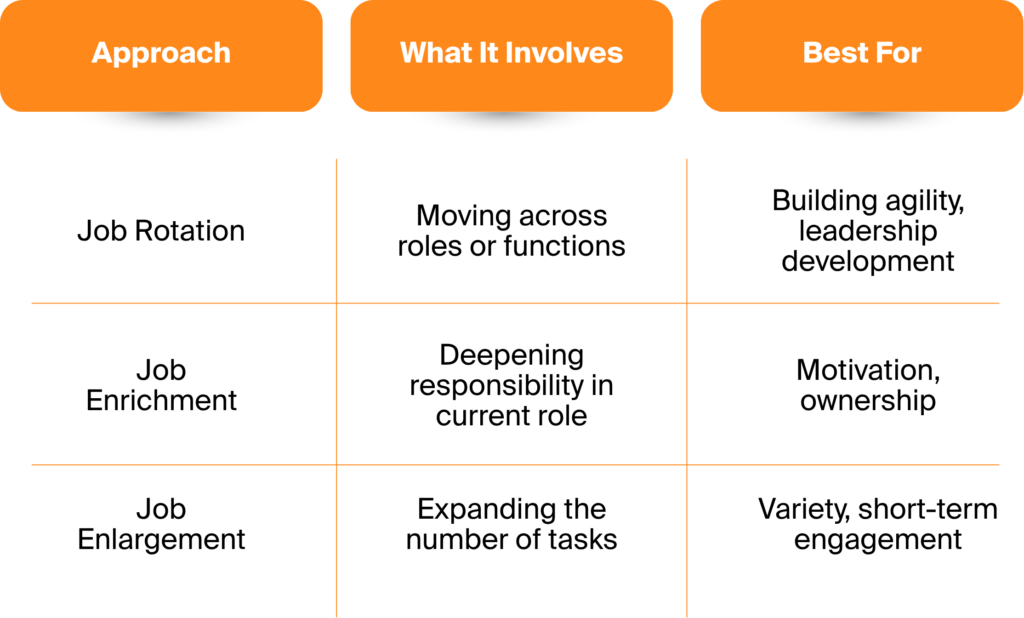
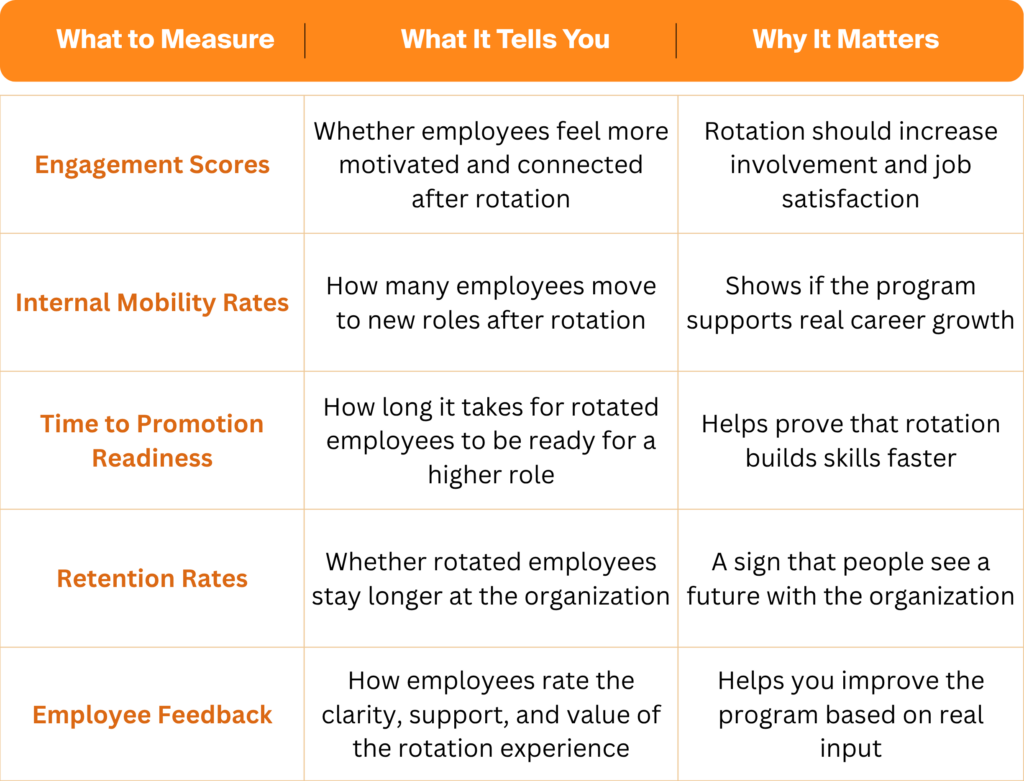
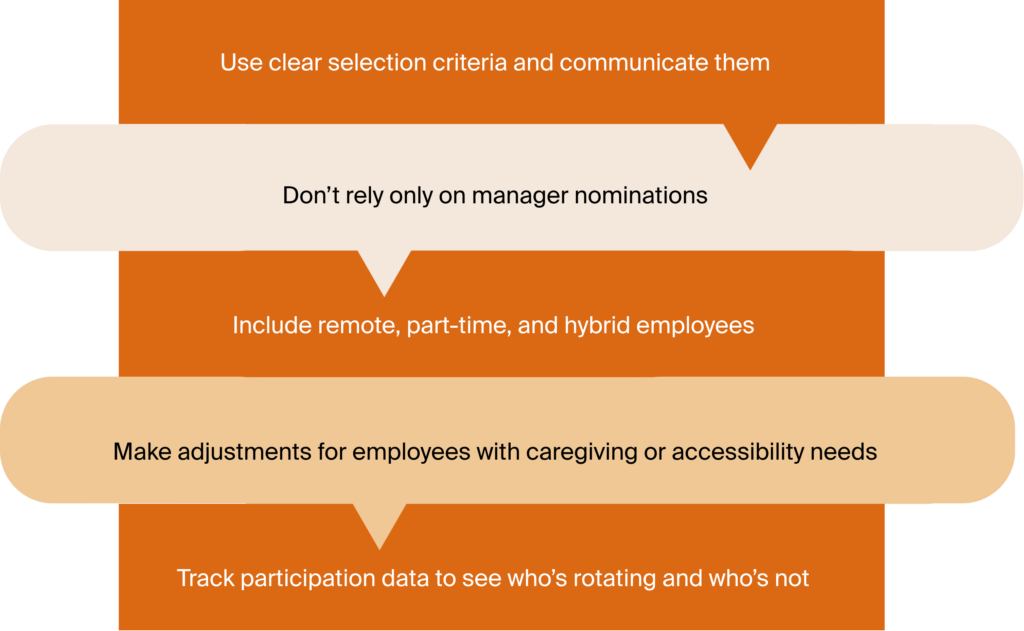

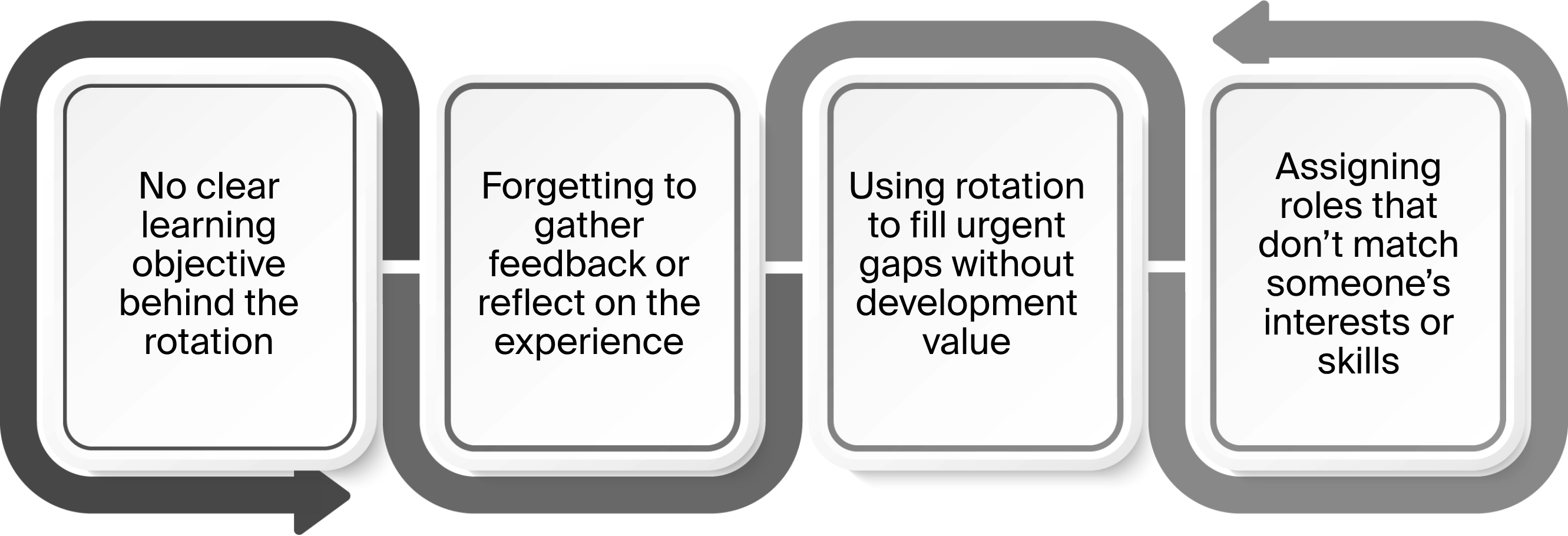


 KnowledgeCity
KnowledgeCity 
